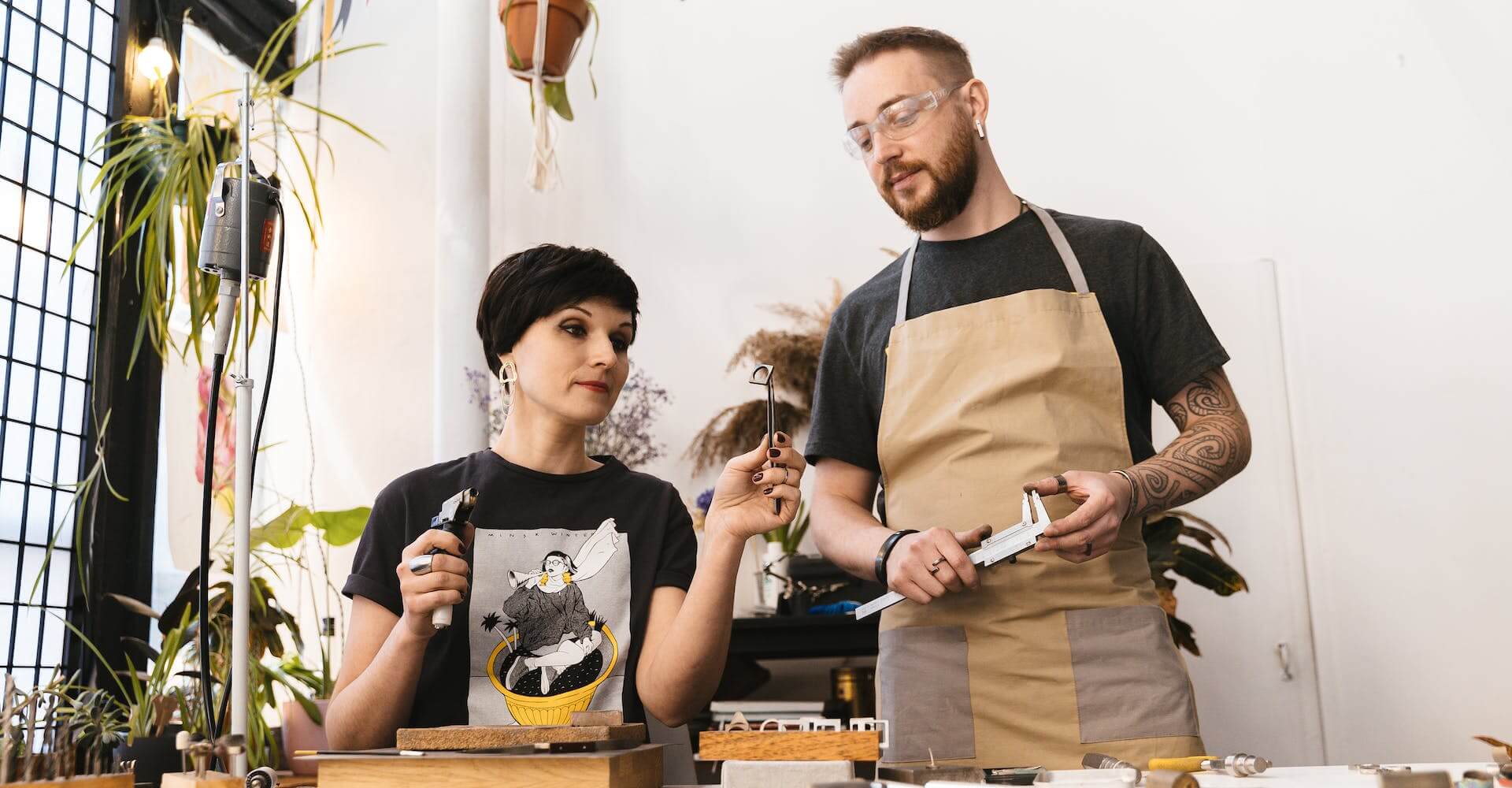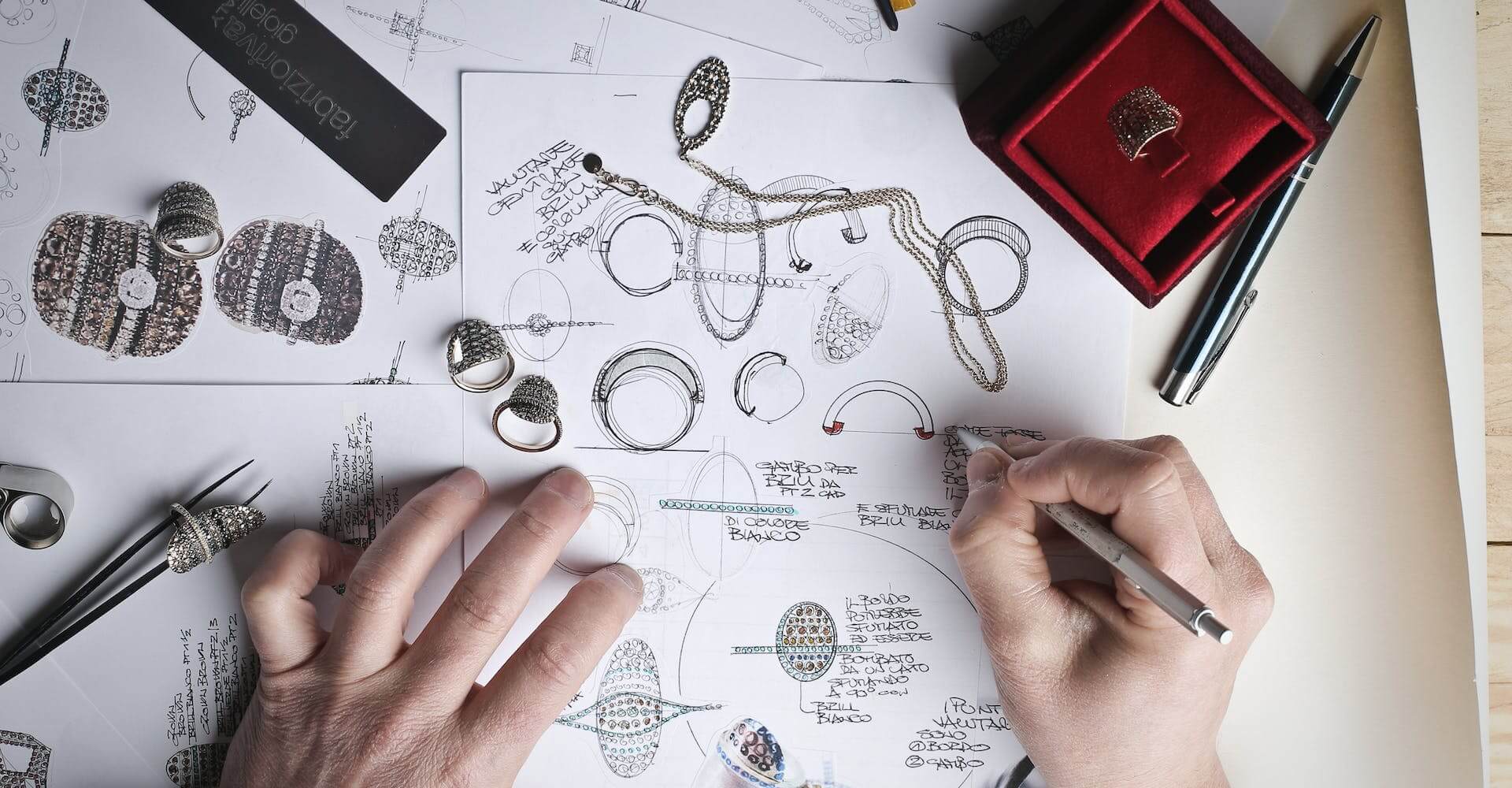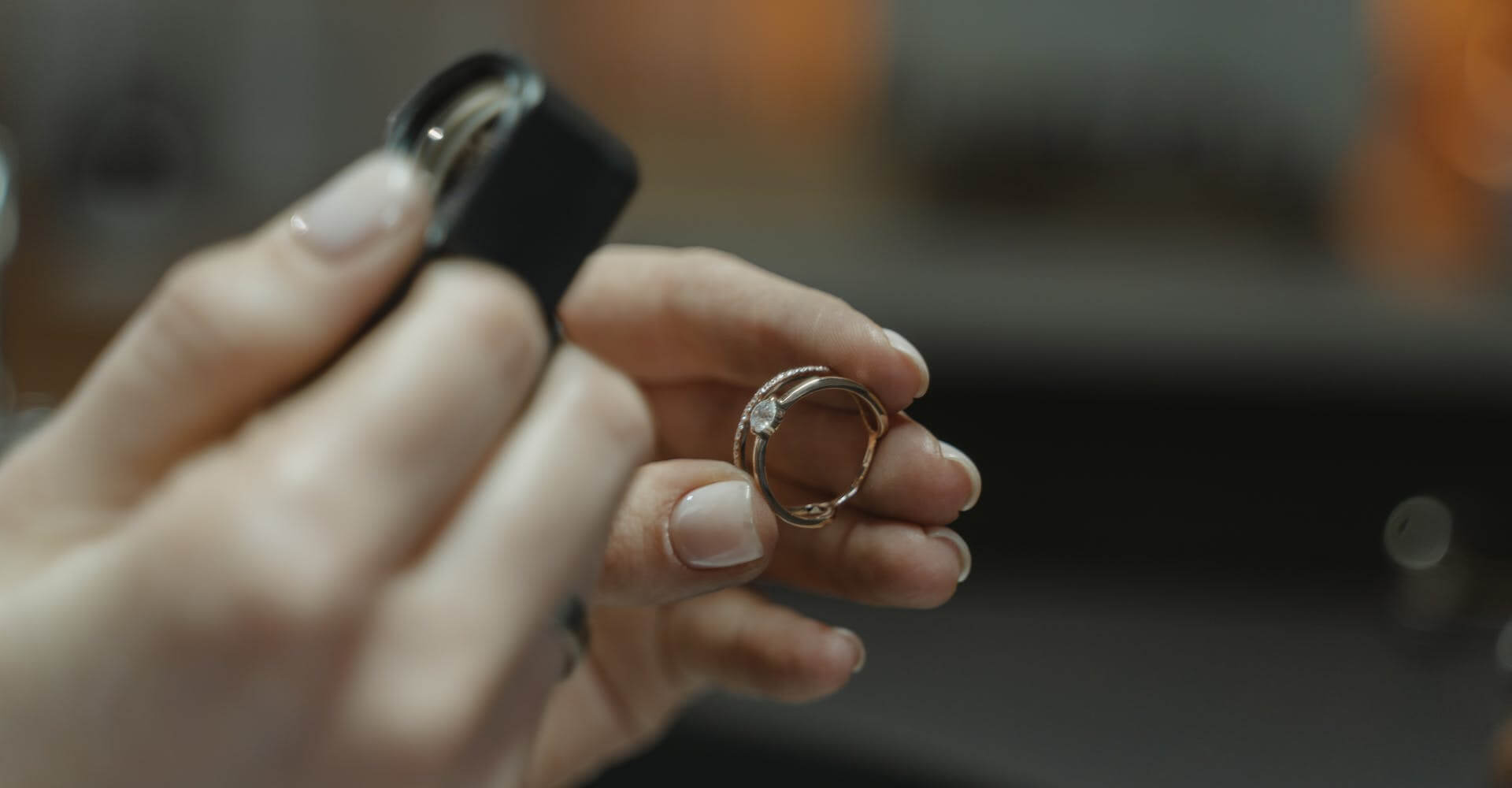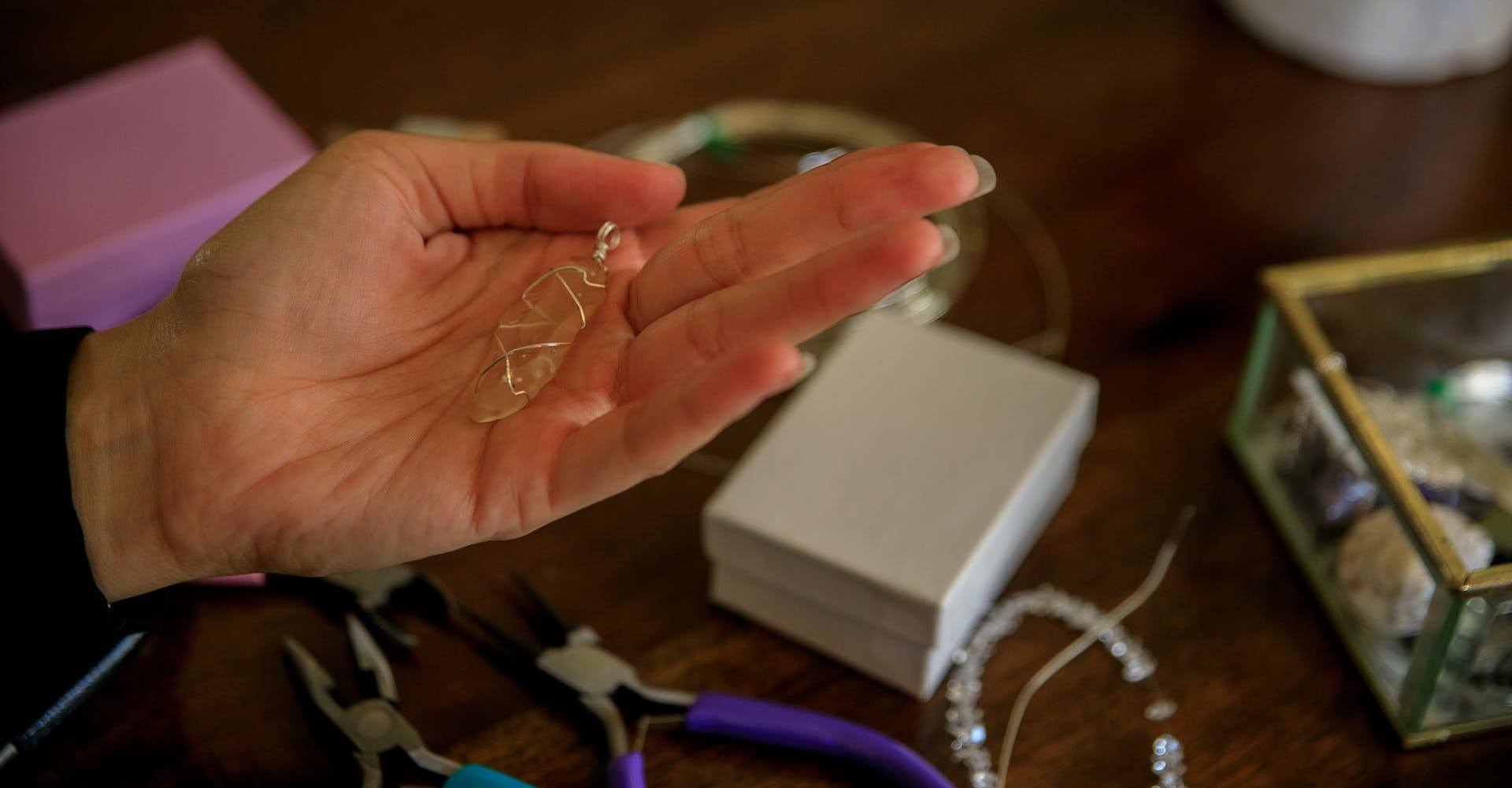Have you ever found yourself admiring a beautiful piece of jewelry and wondered how it was made? Jewelry making is an art form that has been around for centuries and is still very much alive today. If you have an eye for detail, a passion for design, and an interest in working with your hands, then becoming a jeweler may be the perfect career for you. In this blog post, we will provide you with a step-by-step guide to becoming a jeweler. From choosing the right materials and tools to mastering basic techniques and creating your own unique designs, we will take you through everything you need to know to turn your passion for jewelry into a successful career. So if you’re ready to unleash your creativity and start making beautiful pieces of jewelry, then keep reading!
Exploring the different types of jewelers and their specialties
When it comes to venturing into the world of jewelry making, it’s essential to understand the various types of jewelers and their specialties. The field of jewelry is vast, and each jeweler has their own unique expertise and focus.
Firstly, we have the bench jeweler, also known as a goldsmith or silversmith. These talented individuals are skilled in the art of crafting and repairing jewelry. They work meticulously at their workbenches, using a variety of tools and techniques to shape precious metals, set gemstones, and bring intricate designs to life. Bench jewelers are the backbone of the industry, utilizing their expertise to create stunning pieces that stand the test of time.
Next, we have the gemologist, a jeweler with a deep knowledge and passion for gemstones. Their specialty lies in evaluating, grading, and identifying various gemstones, including diamonds, emeralds, rubies, and more. Gemologists play a crucial role in ensuring the quality and authenticity of gemstones, providing valuable insights to both jewelers and customers.
Another type of jeweler is the designer jeweler. These innovative individuals have a flair for creativity and a keen eye for aesthetics. They conceptualize and create unique, one-of-a-kind pieces that often reflect their artistic vision and personal style. Designer jewelers have the ability to transform raw materials into wearable works of art, combining metals, gemstones, and intricate details to craft pieces that captivate the imagination.
There are specialized jewelers who focus on specific areas such as engagement rings, bridal jewelry, or custom designs. These jewelers have honed their skills to cater to specific needs and preferences, ensuring that their customers’ desires are met with precision and expertise.
Exploring the different types of jewelers and their specialties allows aspiring jewelers to identify their own passions and areas of interest within the field. Whether it’s the artistry of design, the technical precision of craftsmanship, or the allure of gemstones, each specialty offers a unique pathway to embark on a fulfilling journey as a jeweler.
Developing a passion for jewelry making
Developing a passion for jewelry making is a crucial step on the path to becoming a skilled jeweler. It is this passion that will fuel your creativity, drive you to learn new techniques, and push you to create unique and stunning pieces. So, how can you cultivate this passion for jewelry making?
Immerse yourself in the world of jewelry. Visit local jewelry stores, attend trade shows and exhibitions, and explore online platforms dedicated to jewelry making. Take the time to observe and appreciate different styles, materials, and craftsmanship. Let yourself be inspired by the intricate designs, the meticulous attention to detail, and the stories behind each piece.

Invest in your education. Enroll in jewelry making classes or workshops to learn the fundamentals of the craft. These classes will teach you the basics of metalworking, stone setting, soldering, and other essential techniques. As you gain knowledge and hands-on experience, you’ll find yourself becoming more confident and passionate about your craft.
Seek out mentors and join jewelry making communities. Connecting with experienced jewelers and fellow enthusiasts can provide invaluable guidance, inspiration, and support. Whether it’s joining online forums, attending local meetups, or participating in workshops, surrounding yourself with like-minded individuals will foster your passion for jewelry making.
Never stop learning. Stay updated on the latest trends, techniques, and technologies in the industry. Take advantage of online resources, such as tutorials, blogs, and videos, to expand your skills and knowledge. Experiment with different materials, explore new designs, and challenge yourself to think outside the box. The more you explore and innovate, the more your passion for jewelry making will grow.
Lastly, immerse yourself in the process. Embrace the joy of creating something beautiful with your own hands. Enjoy the satisfaction that comes from transforming raw materials into wearable works of art. Allow yourself to get lost in the intricate details, the delicate balance of colors and textures, and the endless possibilities that jewelry making offers.
Acquiring the necessary skills and knowledge
Here are several ways you can acquire the expertise needed to thrive in the world of jewelry making.
1. Enroll in a jewelry making course:
Consider joining a reputable jewelry making program or attending workshops conducted by experienced jewelers. These courses cover various aspects of the craft, including design principles, metalwork techniques, gemstone identification, and jewelry repair. Learning from seasoned professionals will provide you with invaluable insights and hands-on experience.
2. Apprenticeships or internships:
Seek out opportunities to apprentice under established jewelers or work as an intern in a jewelry studio or store. This immersive experience allows you to observe and learn from experts in real-world settings. You’ll gain practical skills, learn about industry practices, and build a network of connections.
3. Self-study and research:
Supplement your formal education with self-study. There is a wealth of information available in books, online tutorials, and instructional videos. Delve into topics such as gemology, metalworking techniques, stone setting, and jewelry design. Stay updated with industry trends and innovations through trade magazines and online forums.
4. Attend jewelry trade shows and exhibitions:
These events offer a unique opportunity to immerse yourself in the world of jewelry. Explore showcases of exquisite pieces, attend seminars and workshops conducted by industry experts, and network with fellow jewelers. Trade shows provide a platform for discovering new techniques, sourcing materials, and staying abreast of the latest developments in the field.
5. Practice and experimentation:
As with any craft, practice is key. Set up your own workspace and dedicate time to perfecting your skills. Start with simple projects and gradually challenge yourself with more complex designs. Experiment with different metals, gemstones, and techniques to develop your unique style and expertise.
Gathering the essential tools and materials
To create stunning pieces of jewelry, you need to have the right equipment at your disposal. In this section, we will explore the essential tools and materials that every aspiring jeweler should have.
1. Basic Hand Tools:
These tools are the backbone of your jewelry-making process. They include jewelry pliers, wire cutters, needle files, a jeweler’s saw, and a set of precision screwdrivers. These tools will help you with tasks such as shaping, cutting, filing, and assembling your jewelry pieces.
2. Soldering Equipment:
Soldering is a crucial technique in jewelry making that involves joining metal components using heat and a metal alloy called solder. To perform this technique, you will need a soldering torch, a soldering pick, flux, soldering pads, and a fireproof surface to work on. These tools will allow you to create strong and secure connections between metal components.
3. Materials and Gemstones:
Depending on the type of jewelry you want to create, you will need a variety of materials and gemstones. This can include metals such as gold, silver, or copper, as well as beads, chains, clasps, and findings. Gemstones add beauty and value to your jewelry, so consider investing in a selection of high-quality gemstones that suit your design aesthetic.
4. Workbench and Safety Equipment:
Having a dedicated workspace is essential for any jeweler. Set up a workbench with a sturdy surface, good lighting, and storage for your tools and materials. Additionally, invest in safety equipment such as safety goggles, a dust mask, and heat-resistant gloves to protect yourself during the jewelry-making process.
5. Additional Tools:
Depending on your specific jewelry-making techniques and designs, you may require additional tools such as a flex shaft, a polishing machine, a mandrel, or a ring sizer. These tools can enhance your craftsmanship and help you achieve professional results.
Learning the basics of jewelry design
To start, familiarize yourself with the various components and tools that are commonly used in jewelry making. This includes understanding different types of metals, gemstones, findings, and clasps. Knowing how to properly handle and manipulate these materials is crucial for creating beautiful and durable pieces.
Next, delve into the world of design principles. Explore concepts such as color theory, balance, proportion, and texture. These principles will guide your creative process and help you select the right combination of elements to achieve the desired aesthetic appeal.

Learn about different jewelry making techniques and processes. This can include wire wrapping, soldering, stone setting, beadwork, and metal fabrication. Each technique has its own unique challenges and rewards, and mastering them will expand your repertoire as a jeweler.
Take advantage of resources available to you, such as books, online tutorials, and workshops. These will provide valuable insights and practical guidance on honing your skills. Consider joining a local jewelry making community or guild, where you can connect with fellow artisans and participate in collaborative projects or exhibitions.
As you progress in your learning journey, don’t be afraid to experiment and push the boundaries of traditional jewelry design. Embrace your own artistic style and find ways to express your unique vision through your creations. Remember, jewelry design is an art form that allows you to tell stories, evoke emotions, and make a lasting impact on those who wear your pieces.
Mastering different jewelry making techniques
The world of jewelry making is vast, encompassing a wide range of techniques that allow for unique and intricate designs to come to life.
One of the fundamental techniques to learn is metalworking. This involves shaping and manipulating metal to create the foundation of a piece of jewelry. This can include sawing, filing, soldering, and forging. With practice and precision, you can create stunning metal pieces that serve as the canvas for your artistic expression.
Another technique to master is stone setting. This involves securely placing gemstones or other precious materials into the metalwork. Whether it’s prong setting, bezel setting, or channel setting, each technique requires precision and attention to detail to ensure the stones are secure and enhance the overall aesthetic of the piece.
Wirework is yet another important technique to explore. It involves using wires of varying thicknesses to create intricate designs or decorative elements within a jewelry piece. From creating delicate wire-wrapped pendants to intricate wire-woven bracelets, this technique offers endless possibilities for adding a unique touch to your creations.
Learning the art of enameling can add a vibrant and eye-catching element to your jewelry. Enameling involves fusing powdered glass onto metal through a high-temperature firing process. By experimenting with different colors and techniques, you can create stunning enamel designs that add depth and character to your pieces.
In the world of jewelry making, there are numerous other techniques to explore, such as beadwork, chainmaille, and etching. Each technique requires patience, practice, and a willingness to learn. By continuously honing your skills and exploring new techniques, you can expand your repertoire and develop your own signature style as a jeweler.
Understanding the importance of precision and attention to detail
Every piece of jewelry you create is a work of art, and it is the meticulous attention you give to every tiny detail that sets your creations apart.
Whether you are designing a delicate necklace, a sparkling engagement ring, or a statement bracelet, precision is key. Each stone must be carefully set in its designated place, ensuring that it is secure and perfectly aligned. Every curve, every angle, and every surface must be flawlessly polished, creating a smooth and seamless finish.
This level of precision requires patience and a steady hand. It is the ability to focus on the smallest of details that allows you to create jewelry that is not only visually stunning but also structurally sound. Each component must fit together seamlessly, creating a piece that is not only beautiful but also durable.
Attention to detail goes beyond just the physical aspects of jewelry making. It extends to the design process as well. Understanding the importance of precision means taking the time to listen to your clients, understanding their desires, and translating their vision into a piece of wearable art. It means paying attention to the smallest nuances and incorporating them into your designs, creating a piece that truly reflects the individuality and personality of the wearer.
Building your own jewelry making studio
Building your own jewelry making studio is an exciting step in your journey as a jeweler. Having a dedicated space to create and craft your designs can greatly enhance your productivity and creativity. Here are some key steps to consider when setting up your own jewelry making studio.

1. Choose the right location:
Select a space that suits your needs and preferences. It could be a spare room in your home, a garage, or even a rented studio space. Consider factors like natural light, ventilation, and privacy.
2. Determine your equipment and tools:
Evaluate the type of jewelry you plan to create and make a list of the necessary equipment and tools. This may include a workbench, jeweler’s bench, saws, files, pliers, hammers, soldering equipment, polishing tools, and more. Invest in high-quality tools that will last and provide precise results.
3. Organize your workspace:
Arrange your tools and equipment in a way that maximizes efficiency and accessibility. Install storage solutions like shelves, drawers, and pegboards to keep your workspace clutter-free and well-organized. This will save you time and frustration when searching for specific tools or materials.
4. Lighting and ventilation:
Adequate lighting is crucial for detailed work in jewelry making. Consider installing task lighting or adjustable lamps to ensure proper visibility. Proper ventilation is also important, especially when working with chemicals or soldering. Ensure there is proper airflow in your studio to maintain a safe and comfortable working environment.
5. Create a comfortable work area:
Invest in a comfortable chair and ergonomic tools to prevent physical strain during long hours of jewelry making. Consider adding a sink or water source nearby for easy cleaning and handling of materials.
6. Safety measures:
Jewelry making involves working with various materials and tools that may pose risks. Install safety measures such as fire extinguishers, first aid kits, and proper ventilation systems. Familiarize yourself with safety protocols and ensure you have protective gear like goggles, gloves, and aprons.
7. Inspiring decor:
Personalize your studio with inspiring decor that reflects your style and aesthetic. Hang artwork, display finished pieces, or incorporate plants to create a welcoming and inspiring atmosphere.
Showcasing and marketing your jewelry creations
Once you have perfected your jewelry creations, it’s time to showcase and market them to the world. In this digital age, there are countless platforms and strategies you can utilize to effectively reach your target audience and generate buzz around your jewelry brand.
One of the most powerful tools at your disposal is social media. Create visually stunning posts that highlight the intricate details and unique features of your jewelry pieces. Platforms like Instagram and Pinterest are particularly popular among jewelry enthusiasts, so make sure to establish a strong presence on these platforms. Engage with your followers, respond to comments, and collaborate with influencers or other complementary brands to expand your reach.
Another effective way to showcase your jewelry is through a well-designed website or online store. Invest in professional product photography that captures the essence and craftsmanship of your pieces. Provide detailed descriptions, sizing charts, and any relevant information that will help potential customers make informed purchasing decisions.
Participating in local craft fairs, trade shows, or pop-up events can also be a great way to showcase your jewelry in person. Create an eye-catching booth or display that reflects your brand’s style and aesthetic. Offer special promotions or discounts to entice customers and encourage them to make a purchase.
Don’t underestimate the power of word-of-mouth marketing. Encourage satisfied customers to share their experiences and post pictures of your jewelry on social media. Consider implementing a referral program or offering incentives for customers who bring in new business.
Collaborate with influencers, fashion bloggers, or stylists who align with your brand’s values and target audience. Send them samples of your jewelry and ask them to feature it in their content. This can significantly boost your brand exposure and credibility.
Conclusion
The art of jewelry making is a beautiful craft that requires skill, creativity, and dedication. Whether you aspire to create stunning pieces for yourself or pursue a career in the jewelry industry, this guide is an excellent starting point. Embrace your passion for jewelry and let your creativity shine as you uncover the world of this captivating art form.







2 Comments
[…] trọng nhất trong thiết kế lắc tay. Chúng mang lại vẻ đẹp và sự lấp lánh cho trang sức. Thép không gỉ là một chất liệu phổ biến, vừa bền vững vừa có giá trị […]
[…] thực tế, lắc tay nữ không chỉ là một món trang sức đơn thuần mà còn mang theo một ý nghĩa và xu hướng riêng. Bài viết của chúng […]